Building a stand-out brand in b2b saas: functional vs emotional branding

What a brand really means
A ‘brand’ is a loaded word. Everyone has different opinions on what a brand is.
But I don’t think the approach to brand building is different for a person vs a business – whether it’s a saas, an app, agency, or a platform like Shopify.
At its core, a brand is not what you say about yourself, but what others say about you when you’re not in the room. And if they don’t have anything to say about you, then well, you’re not a brand.
It’s the image that comes to people’s minds when they first hear your name or see your face.
Two things that define a brand
- What people genuinely say about you – not because they’re your friend, but because they truly feel so.
- For STOQ, customers appreciate our support and how ‘human’ our brand is compared to other Shopify apps and tools.
- Our job as marketers is to amplify those nice things.
- How people perceive the value you add to their lives – and how they compare you to others in your category.
This is tricky because our minds work on repeated associations. If you’re used to seeing red apples since childhood, and I ask you “what color is an apple?”, you’ll instinctively say red.
In branding, your power comes from being able to say things that no one else in your category can. You want to be the green apple, not the red. You want to be the only, not the best.
Positioning in b2b saas branding
For instance, Shopify positions itself as the most trusted e-commerce platform in the world. Even “trust” is vague—so they get specific: their checkout converts the highest.
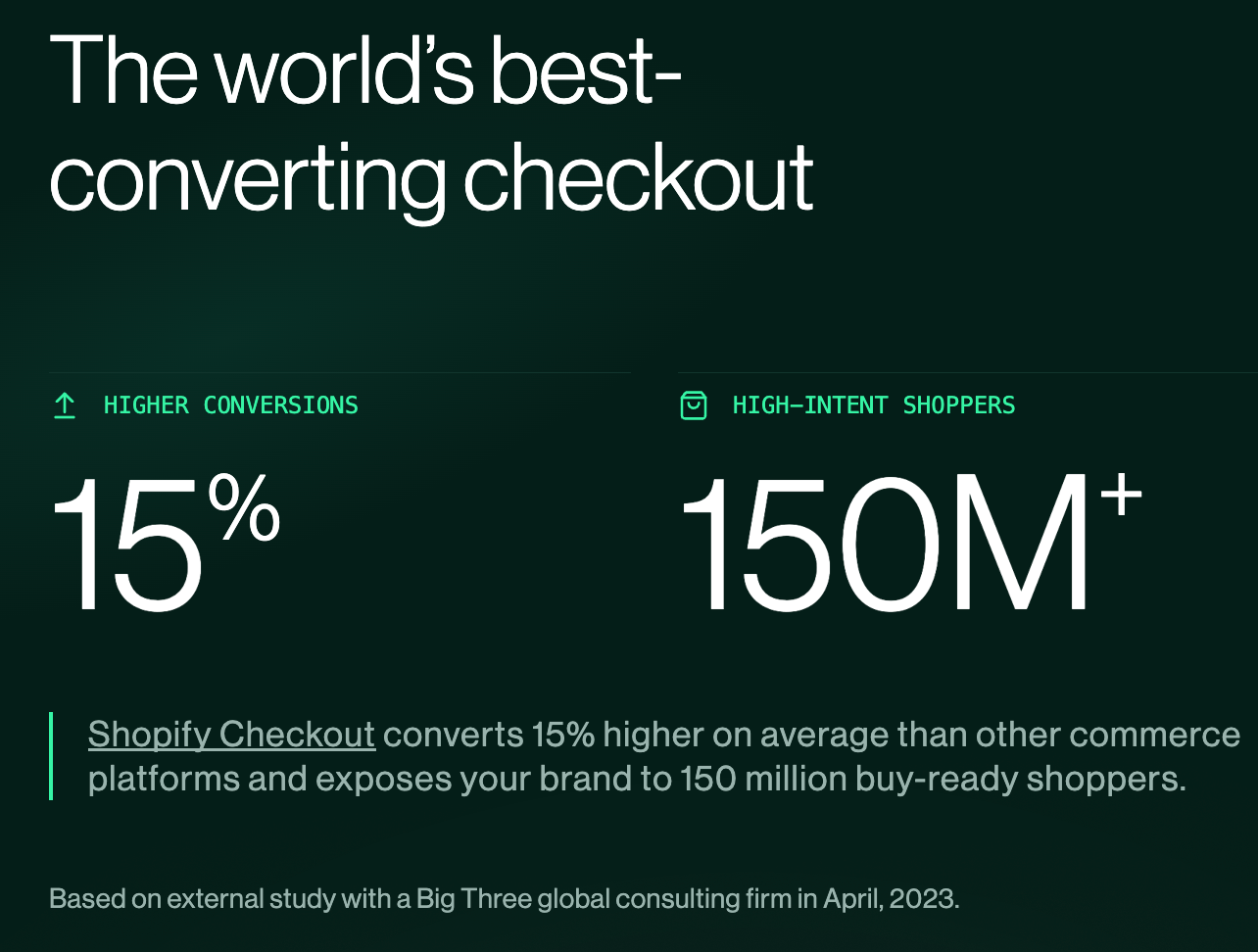
To strengthen this, Shopify commissioned an independent study by a big 3 consulting firm. Why? Because people trust what others say about you more than what you say about yourself.
In b2b saas brand building, this matters even more because most companies solve the same problems. If you don’t differentiate, customers mentally bucket you with everyone else. And that’s the worst place to be in as a marketer.
Two choices for businesses at scale
Broadly, there are only two options:
- Sell a low-ticket product at high volume (commodity risk, no pricing power).
- Sell a high-ticket product at low volume (unique positioning, stronger pricing power).
Unless… marketing enters the chat.
How marketing builds associations
Marketing (and branding as part of it) does two things:
1. Own a niche in the category (functional association)
By repeatedly linking your brand to a customer’s pain and solution, you create memory.
- Kleenex → tissue paper
- Zoom → video calls
This is how you become the first solution people think of when they face that problem.
2. Make the brand “cool” (emotional association)
Nobody likes boring. People’s lives are already boring enough. They want to associate with brands that make them feel smarter, stronger, or more interesting.
Branding is tied to identity and self-image. In b2b saas, this matters because features alone don’t differentiate—you need emotional resonance.
Nike: balancing emotional + functional
- Homepage slogan: “just do it.” (purely emotional)
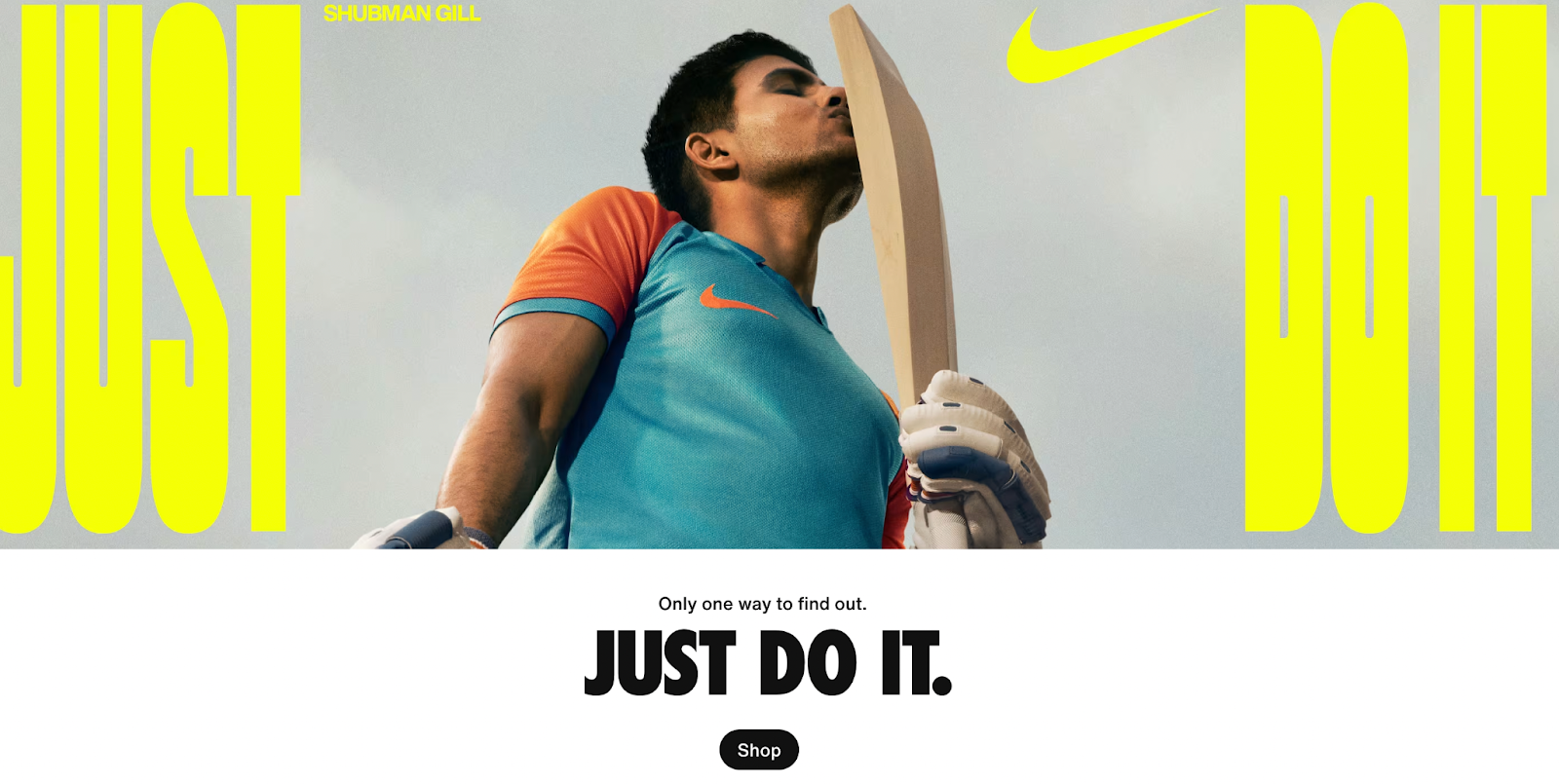
- Product details:
- “three innovative technologies power your run…”
- “two forefoot air zoom units with zoomx foam…”
- “full-length carbon-fibre plate…”
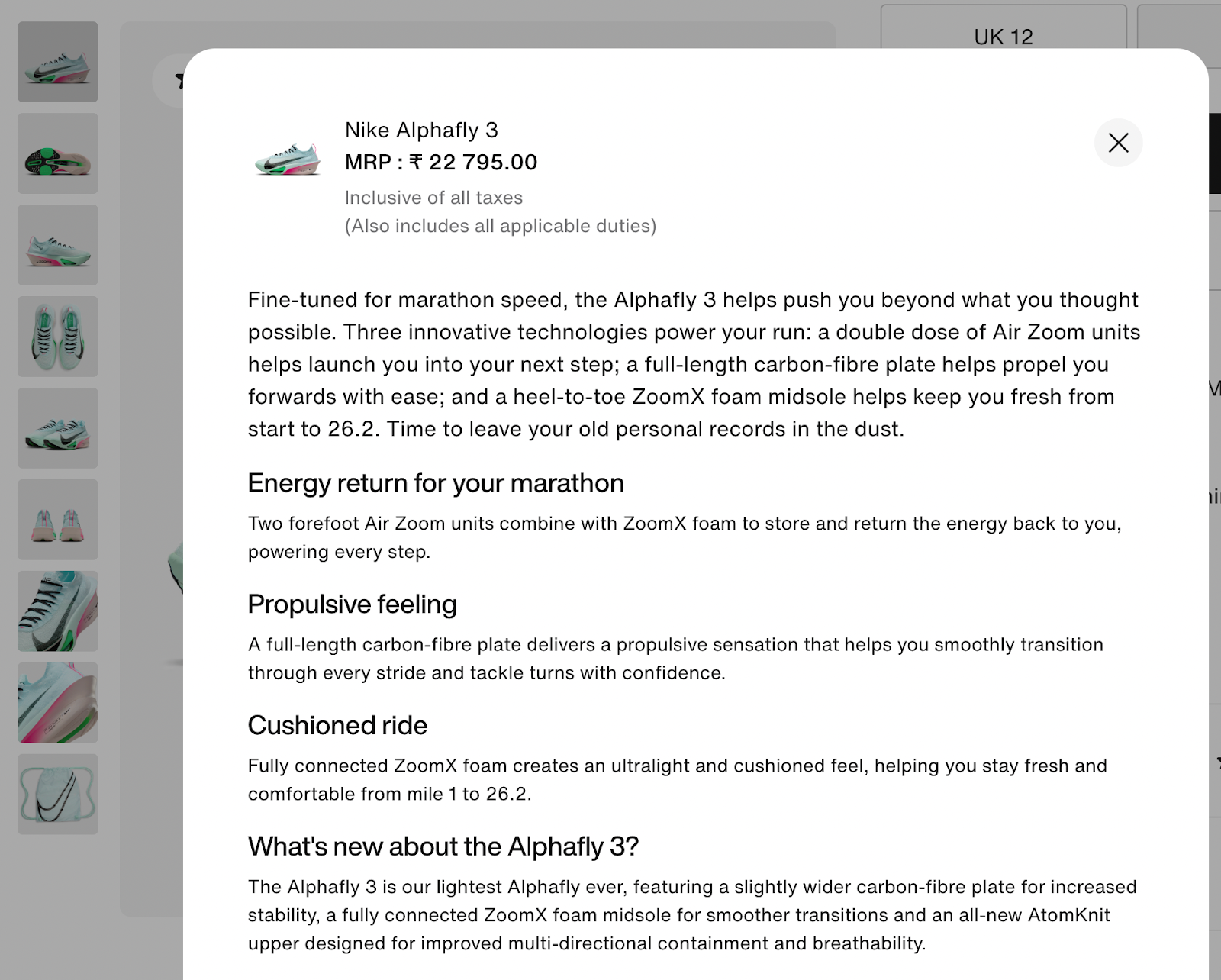
Nike combines superior product functionality with a powerful emotional brand.
Shopify: identity and mission
Shopify’s homepage headlines:
- “be the next big thing”
- “be the next unicorn startup”
- “be the next category creator”
Each one speaks to a different identity: entrepreneur, founder, disruptor.
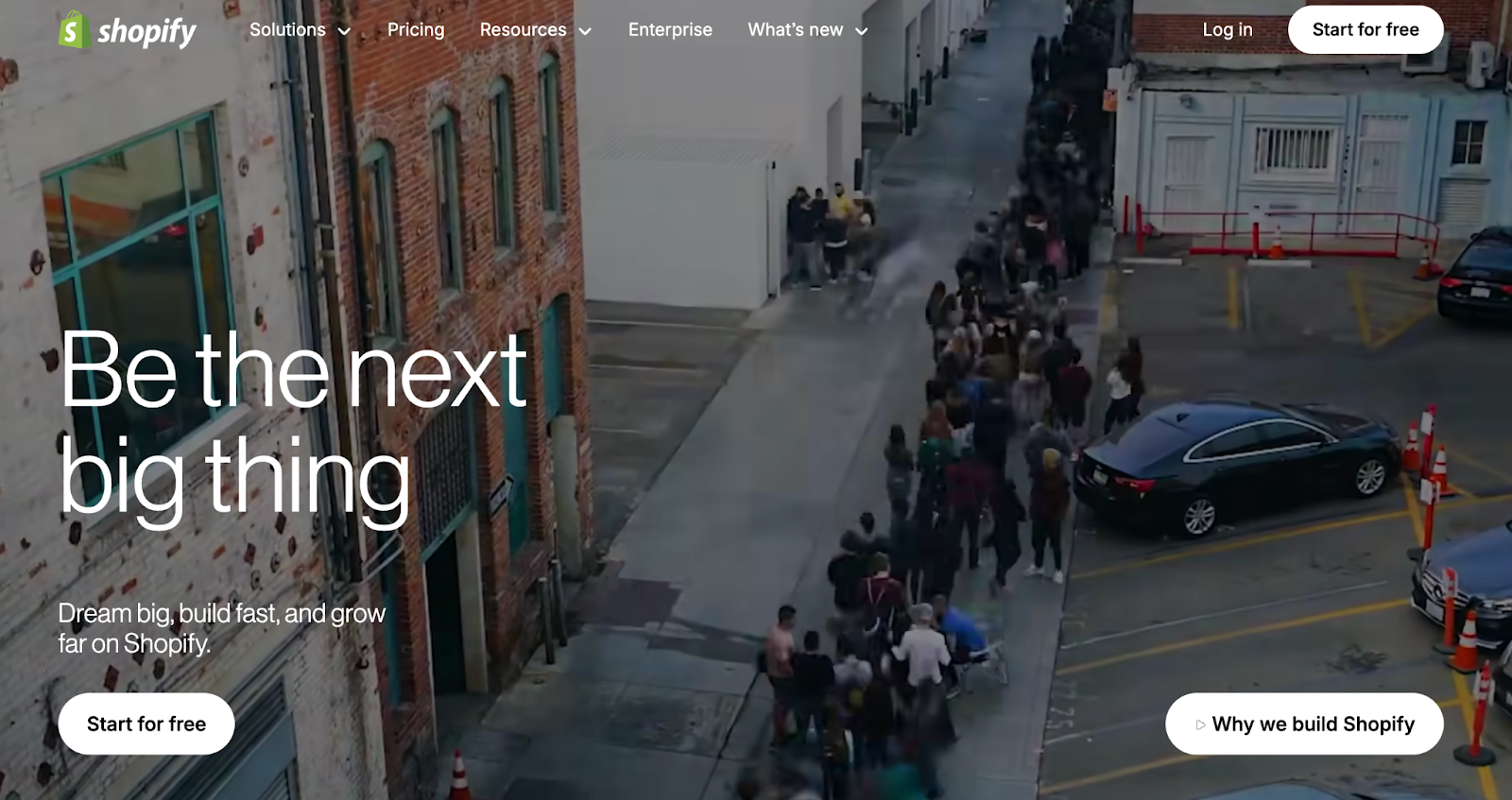
Their brand storytelling video (“why we build Shopify”) is one of the best I’ve seen.
And if you further scroll down on their homepage, you’ll see emotional hooks everywhere:
- “for everyone from entrepreneurs to enterprise”
- “sell here, there, and everywhere”
- “find your forever customers”
There’s very little talk and mention about their features, product, platform. In fact, you’ll have to look very closely to find the technical stuff. Most of it is linked to a separate landing page.
People behind the brand (trust & authenticity)
Lastly, people trust people. They also want to know the people behind the brand.
They want to know why you do what you do. They want to know why it matters to you.
They want to know your truth.
If you haven’t yet watched Shopify’s brand story video, go watch it.
At 8:06, Tobi (founder and CEO, Shopify) says: “I love this so much..” and goes on…

How are you possibly going to fake this? (not even Sam Altman can)
You can see his raw emotions. You can see why Shopify’s mission means so much to him.
The brand’s mission and narrative also has to resonate with the broader community at large.
“Let’s make you a business” (their ad slogan) resonates more than “Better commerce for everyone” so they use it in their campaigns and wherever broad storytelling / emotional hook is important.
The narrative reinforces why they’re trying to make everyone a business. And why what they are doing matters for everyone else.
Tobi has repeatedly described Shopify’s role as “arming the rebels” in commerce. Where the fight is against Amazon, the empire. Towards independence, freedom, via entrepreneurship.
Tobi has used this narrative over and over again in earnings calls, podcasts, and media interviews. Over time, the press started picking it up.
Publications like TechCrunch, Business Insider, The Information have repeated the line, often attributing it directly to Tobi. Eg. “Shopify’s Tobi Lütke says the company’s mission is ‘arming the rebels’ against Amazon’s empire.”
Then the VC world started picking it up. Prominent investors like Andreessen Horowitz have amplified the “arming the rebels” metaphor when analyzing Shopify’s rise.
While their personal stories reveal why it personally matters to them.
If you look at any Harley’s intro video, he introduces himself as an “entrepreneur”

He has been an entrepreneur before, and he’s using that as an identity to relate to all other entrepreneurs.
The 2x2 matrix: functional vs emotional branding
It's useful to think of brand building in terms of this 2x2 matrix below:
- low functional + low emotional → forgettable brands (Q1)
- high functional + low emotional → utility brands (Q2)
- low functional + high emotional → cult-like brands (Q3)
- high functional + high emotional → iconic brands (Q4)
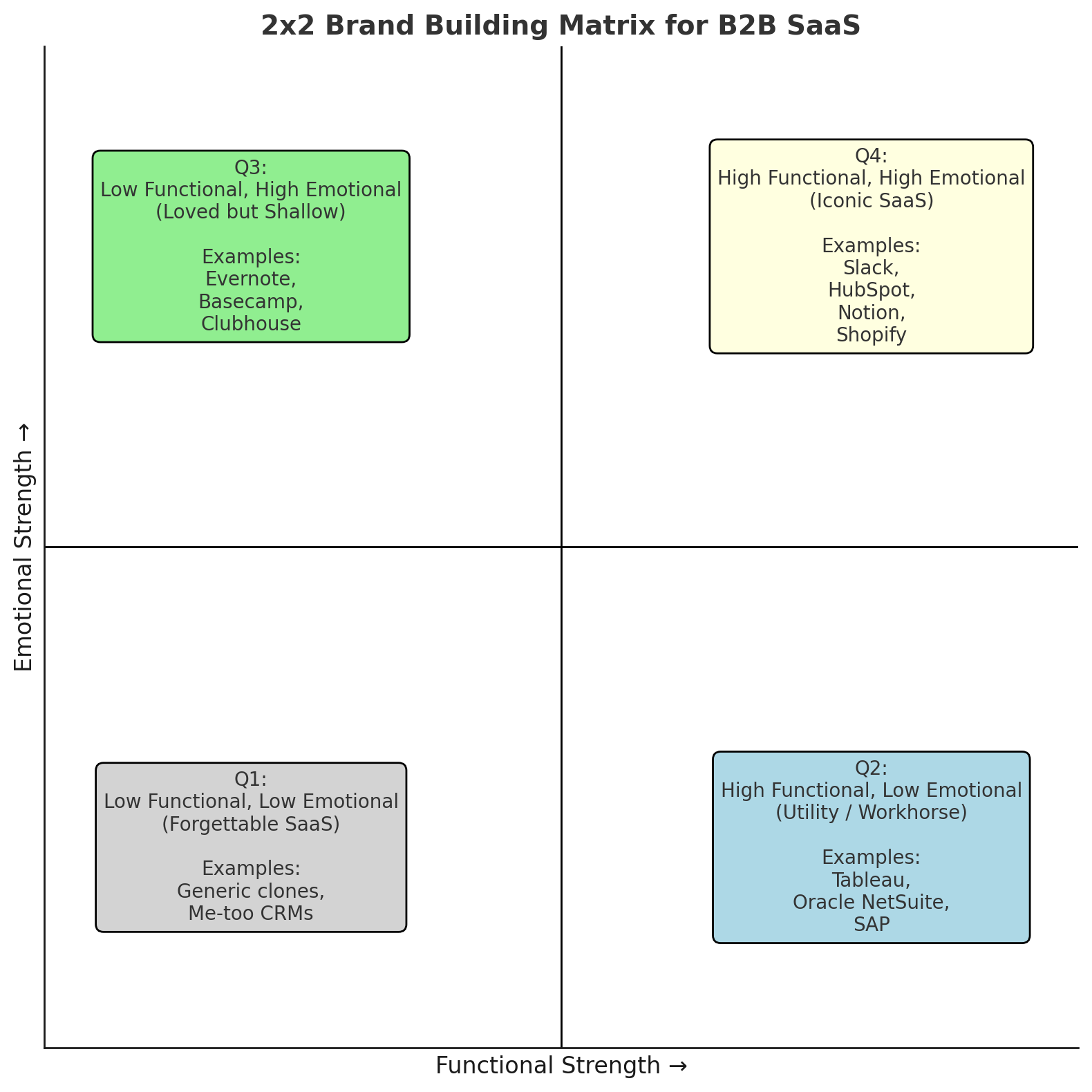
How we're thinking about it at STOQ
For us at STOQ, building a stand-out brand means three things:
- image (functional) – owning the niche: are we the first brand customers think of when facing the problem we solve?
- cool (emotional) – are we more than “just a Shopify app”? do customers remember us emotionally?
- people (personal) – who’s behind the brand, and why does it matter to us personally?
Acronym to remember: icp → image – cool – people.
Or put differently:
- heard of the brand? (image)
- remember the brand? (cool)
- trust the brand? (people)
FAQs
Q1: What is functional vs emotional branding?
Functional branding focuses on features, performance, and solutions. Emotional branding creates identity, trust, and self-expression. The best brands balance both.
Q2: Why is brand positioning important in b2b saas?
Without differentiation, saas products blend together. Strong positioning helps customers instantly recall your brand as the go-to solution.
Q3: What is the ICP branding framework?
The icp (image – cool – people) framework is STOQ’s model for brand building: create strong associations (image), resonate emotionally (cool), and build trust through people (personal).



